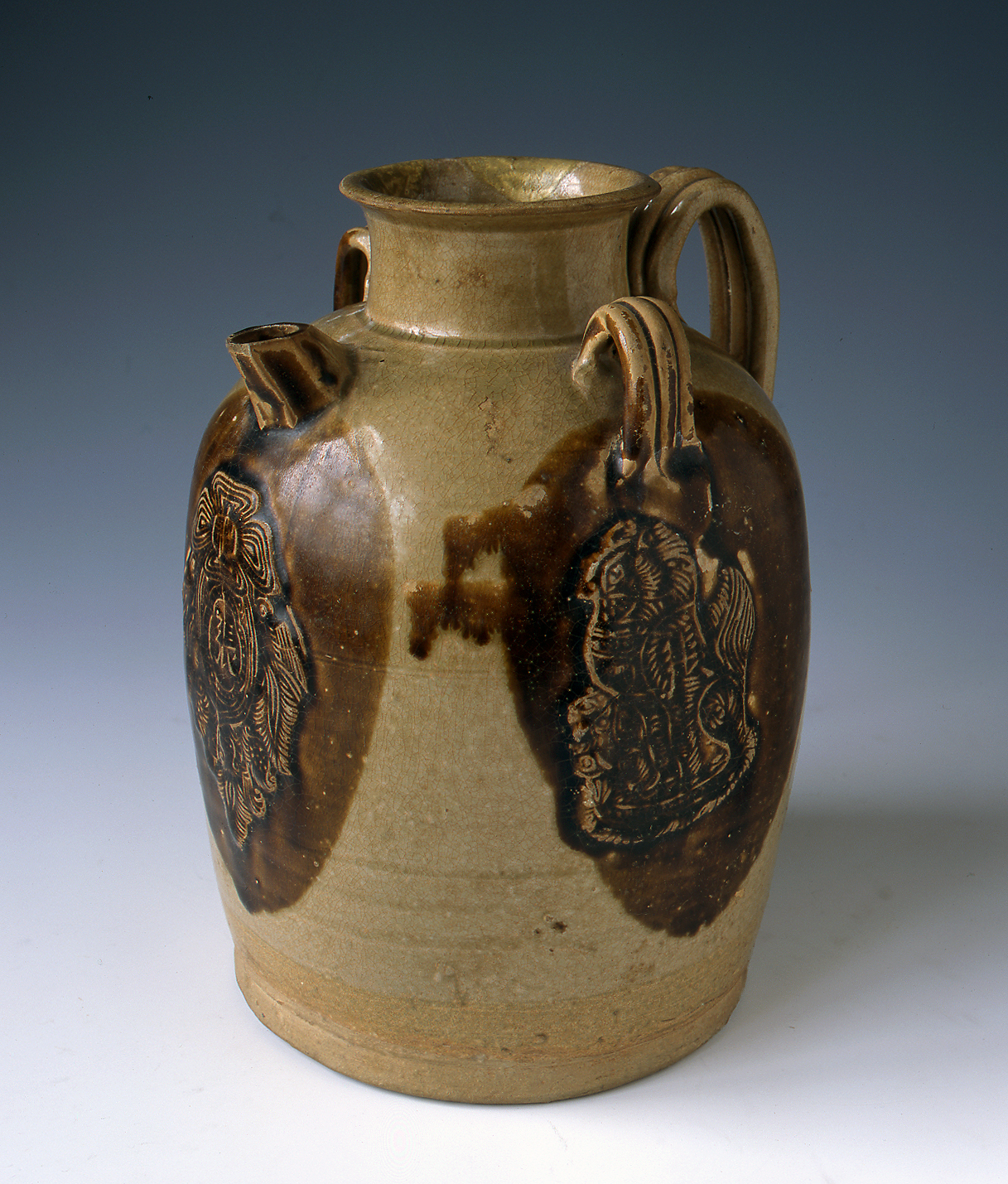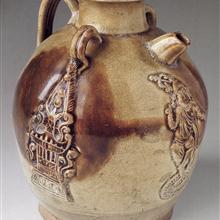Dimensions: Height: 22.5 cm; diameter of the Belly: 16 cm; diameter at the Mouth: 8 cm; diameter at the Base: 15 cm; Weight: 1.45 kg.
Origin: Unearthed at Tongguan of Changsha in 1958.
This short-necked, flat-bottomed vessel has an upturned mouth brim, a short octagonal spout, two ears around its shoulder for carriage, and a tubular belly. It is applied with pale olive green glaze and decorated with brown speckle designs. Beneath the spout there is an applied design with the Chinese character “zhang” in the center.
A product of the Changsha Kiln, this ewer has been preserved fairly intact, with glimmering glaze. The Chinese character in the applied design is very likely the family name of the kiln owner, for the purpose of advertisement. The so-called “from the house of the Bian”, “from the house of the Zheng” and “from the house of the Zhang” all used to be well-known workshops of the Changsha kilns.
The date palm pattern in the molded design is a favorite one for people in west Asian countries and it is quite understandable why such designs were favored in Changsha kiln products which were made mainly for export. The raised design of a lion on this ewer is also of typical west Asian style. The lion, found in Africa and west Asia, is a sacred beast for Buddhists. Owing to its lovely image, it later became one of the representatives of classical Chinese artistic theme of expression.





